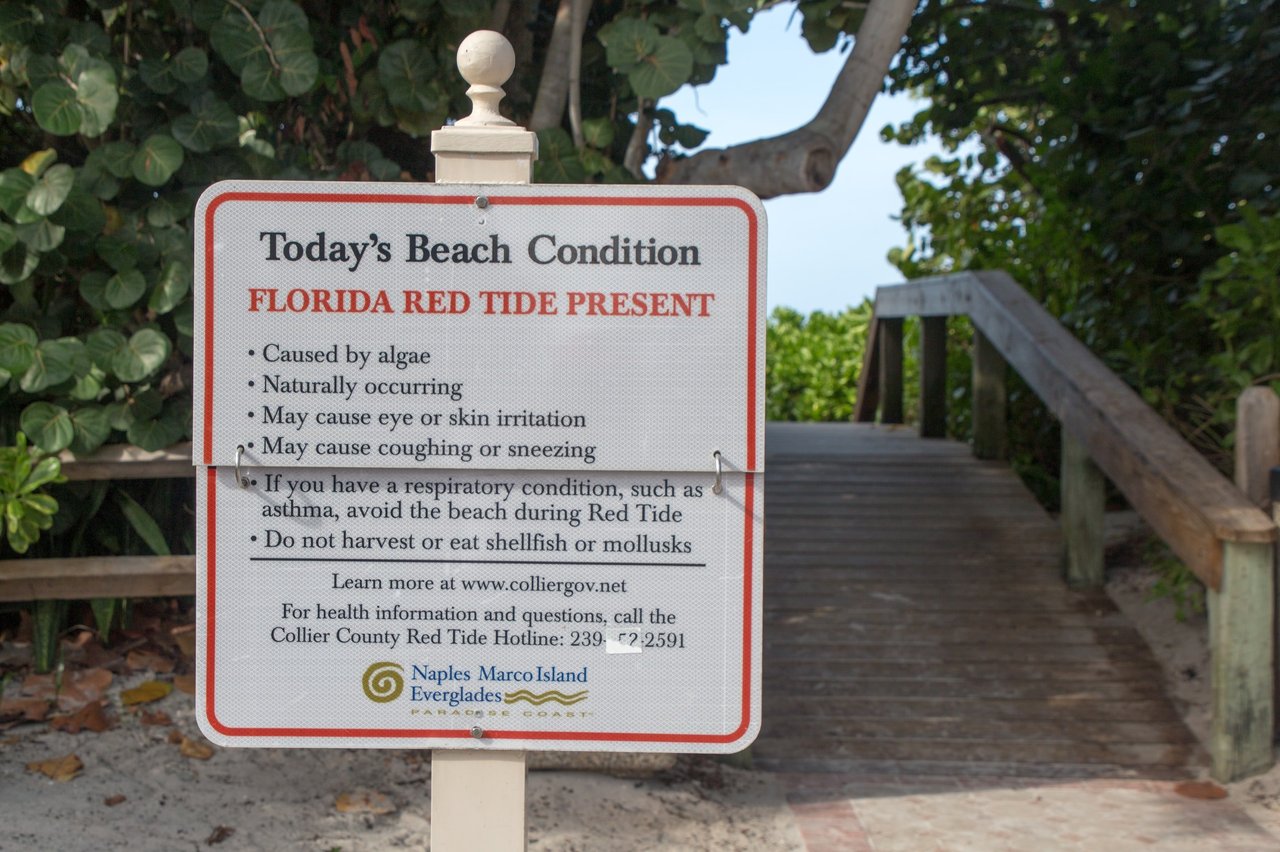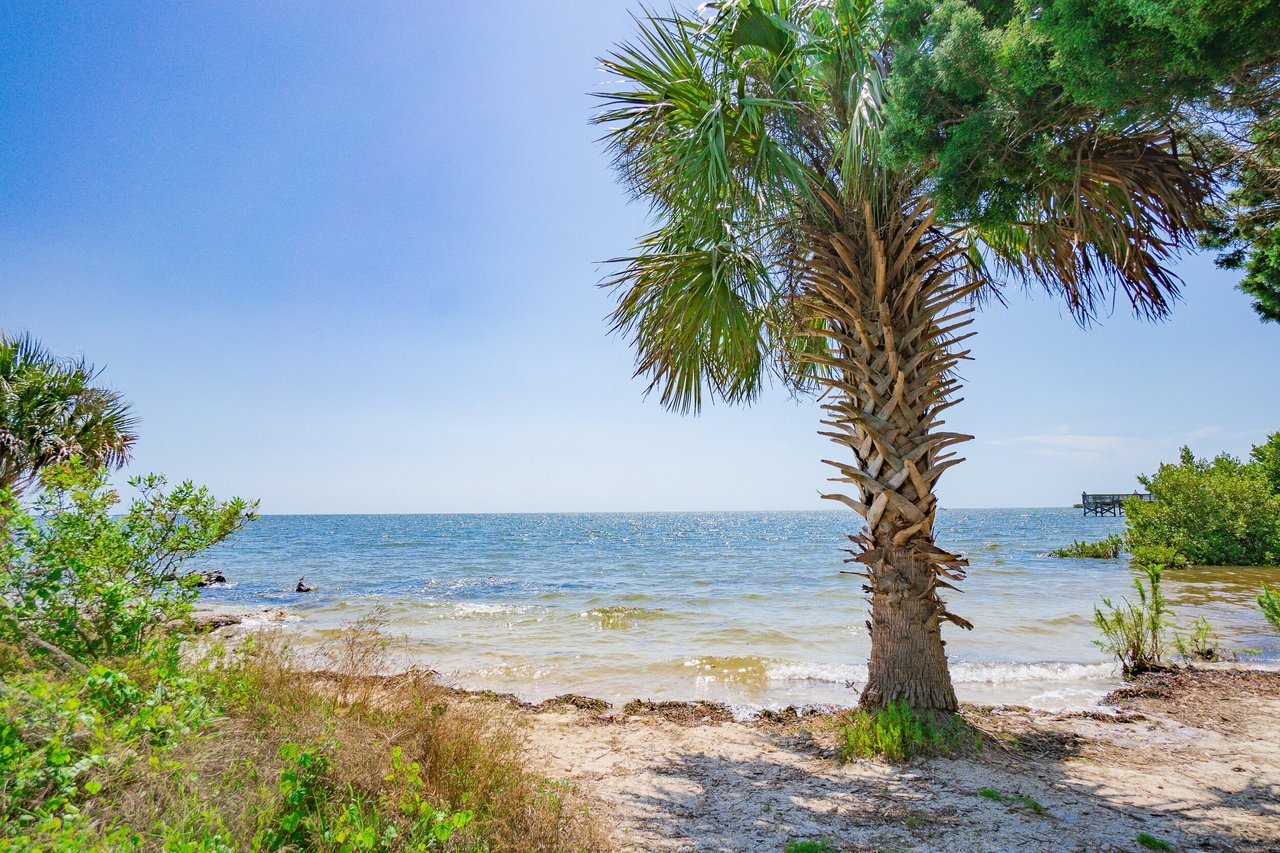
Red Tide
March 13, 2001

March 13, 2001
In Florida, sometimes there are harmful algal blooms that occur when colonies of algae end up growing out of control while producing toxic / harmful effects on people, fish, shellfish, marine mammals, and birds. Over the past week, as of March 13th, 2023, the red tide organism Karenia brevis was detected in 157 samples along Florida’s Gulf Coast. There were 2 in and offshore of Pasco County, 24 in and offshore of Pinellas County, 8 in Manatee County, 32 in and offshore of Sarasota County, 6 in Charlotte County, 9 in Lee County, and 8 in Collier County.
You can technically swim in the water when red tide is present, but we are going to share some of the risks. According to Florida Health, the algae can end up causing skin irritation and burning eyes. Some other symptoms are when you inhale the red tide toxins and they include: coughing, sneezing, and teary eyes. For most people, symptoms are temporary when red tide toxins are in the air, but if it gets to become too much for you, leave the area. Research shows that using over-the counter antihistamines may decrease your symptoms. Check the local forecast before you go out because there are fewer toxins in the air when the wind is blowing offshore. Lastly, if you have chronic respiratory problems like asthma and COPD, or your skin gets irritated easily, you should avoid red tide areas and if you do happen to experience irritation, get out and wash off with fresh water. If you are in the water and are near dead fish, it is recommended to get away or out of the water.
Image from City of Marco Island Florida
Everyone loves a fresh catch, but probably not so much when the red tide has affected the freshness. It is not recommended to fish from the shores where the algae is present because the marine life is most likely either not alive or has toxins running through its body. If you are wanting to eat seafood from restaurants and grocery stores it is considered safe because it comes from red tide-free water and is monitored by the government. According to Florida Health, it is advised to not eat mollusks (clams or oysters) taken from red tide waters, as they contain toxins that cause a food poisoning called NSP (Neurotoxic Shellfish Poisoning), Finfish caught live and healthy can be eaten if filleted, and edible parts of other animals commonly called shellfish (crabs, shrimp, and lobsters) are not affected by red tide and can be eaten. Do not eat the tamale (green stuff / hepatopancreas).
Image from NBC News
Spring break is right around the corner and Florida is a hot destination for the month of March-April. But, what does this mean for your vacation? The red tide has appeared earlier in the season than normal, but officials have been working diligently to clean up the thousands of dead fish across the Gulf Shores, so do not cancel your plans just yet! Businesses are worried that this year there won’t be as many people to visit because of the algae, which is completely understandable, but as long as you understand red tide in Florida there shouldn’t be too much of an issue. On the bright side, there is a chance that the algae could clear up before your vacation and if it is still present in the water, there is a website you can visit to locate where the red tide is most present in the water and where is it not, so your spring break will not be ruined.
Image from Town of Redington Shores
Florida is a prime destination for the spring season and in case you can’t go swimming at the beach, do not let that ruin your fun! We have pulled together a list of things to do with and without a beach. Check out our blog to see what you can do depending on where you are visiting!
Sources:



Discover the history, attractions, and community spirit of Crystal River, Florida.


Discover local produce and treats at Ferris Groves in Floral City, Citrus County.

You could be at a point in life where you've been contemplating selling or buying a home.


Discover what to plant and how to prepare your soil for harvest.

Lifestyle
Explore Nature's Wonders: Outdoor Adventures Await in Crystal River
At the Katie Spires Team, we combine deep market expertise with a client-first mindset to guide you through every step of your real estate journey. From the initial presentation to the final signature, we’re committed to making your experience seamless, strategic, and successful.